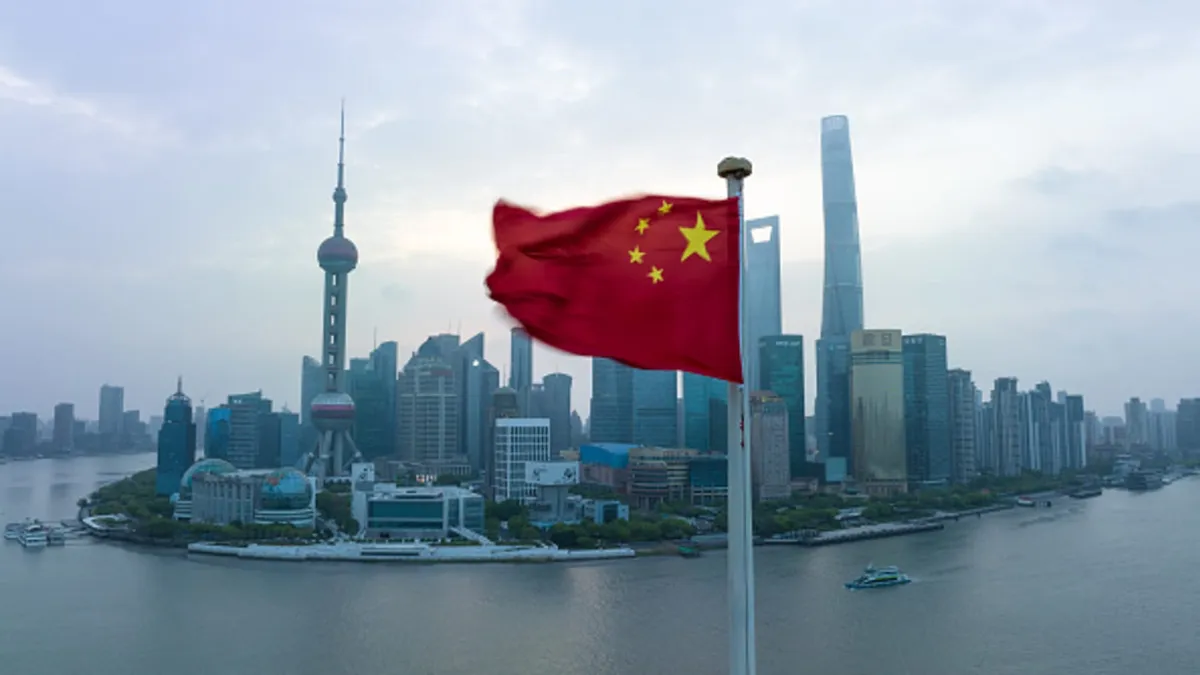
Financial institutions are rethinking their China calls following a surprising trade truce between Washington and Beijing. This agreement has led to an upward revision of both the country's growth forecasts and stock market outlooks. On Monday, the U.S. and China announced a temporary halt on the majority of tariffs on each other's products for a period of 90 days. Under this deal, mutual tariffs will be reduced from a staggering 125% to just 10%, marking a significant easing of tensions that had escalated following U.S. President Donald Trump’s reciprocal tariffs imposed on April 2.
As a result of this de-escalation in trade tensions, several financial institutions are revising their outlooks on China's economic performance. A recent note from UBS highlighted that China’s GDP growth in 2025 could rise to between 3.7% and 4%, an increase from their previous estimate of 3.4%. This revision is based on expectations that the trade war de-escalation might result in a smaller shock to China’s economic landscape.
Morgan Stanley has also adjusted its near-term quarterly China GDP forecasts, anticipating that companies might accelerate exports to capitalize on the lower tariffs. While tariffs remain elevated, the temporary suspension could lead to front-loaded shipments and increased production. According to Morgan Stanley's chief China economist, Robin Xing, there is a possibility that China's second-quarter GDP could exceed the current estimate of 4.5%. Furthermore, the team now forecasts third-quarter growth to show temporary resilience, predicting it will surpass the 4% mark.
ANZ Bank has also increased its expectations, projecting that China’s GDP could exceed 4.2% this year, having revised its forecast from 4.8% in April. Similarly, Natixis has updated its growth outlook for China to 4.5%, up from an earlier prediction of 4.2%, contingent on more proactive stimulus measures and continued tariff reductions. This follows a previous cut in Natixis’s forecast from 4.7% to 4.2% earlier in April.
The optimistic growth prospects have enhanced the outlook for Chinese equities. Nomura has upgraded its position on China equities to tactical Overweight, reallocating some funds from their investments in India to China after the trade discussions. Citi, in a similar vein, has raised its target for the Hang Seng Index by 2% to 25,000 by year-end, with expectations for it to reach 26,000 in the first half of 2026.
Even with this positive momentum, Citi’s China equity strategist Pierre Lau prefers domestic plays that are less susceptible to tariff uncertainties. He has upgraded the consumer sector from neutral to overweight, while also identifying promising opportunities within the internet and technology sectors. Maybank’s chief investment officer, Eddy Loh, noted that the attractive risk-reward profile in China stocks remains appealing, particularly in the communication services and consumer discretionary sectors.
William Ma, chief investment officer of GROW Investment Group, who has maintained a bullish stance on China, believes the recent rebound in Chinese markets signifies a sustained re-rating. He attributes this to recent policy easing and consumption stimulus, which could provide additional support to China’s economy and markets. Following these developments, China’s CSI 300 index saw a slight uptick on Tuesday after a 1.6% increase in the previous session, while Hong Kong’s Hang Seng Index experienced a nearly 3% rise on Monday but fell by 1.5% on Tuesday.
Despite the positive shifts, some experts advise caution against getting overly enthusiastic about what may simply be a tactical bounce in equities. While the outcomes of the U.S.-China trade talks exceeded market expectations, the arrangement remains temporary and subject to future changes, as noted by Loh.